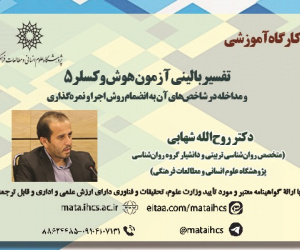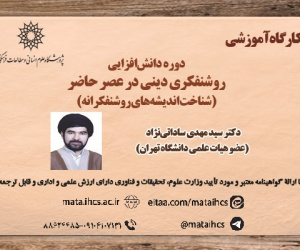تحلیل فضایی اعتراضات صنفی و پیامدهای امنیتی آن در تهران بزرگ (مقاله علمی وزارت علوم)
درجه علمی: نشریه علمی (وزارت علوم)
آرشیو
چکیده
زمینه و هدف: این پژوهش با هدف بررسی الگوی فضایی اعتراضات صنفی در کلان شهر تهران انجام شده است. در این راستا، نحوه توزیع مکانی و زمانی این اعتراضات موردمطالعه قرارگرفته تا علاوه بر شناسایی عوامل مؤثر بر وقوع آن ها، پیامدهای امنیتی ناشی از این اعتراضات نیز تحلیل شود. روش پژوهش: این تحقیق از نظر ماهیت، توصیفی-تحلیلی بوده و از رویکرد تحلیل فضایی بهره می برد. داده های اصلی شامل اطلاعات مربوط به روز، ساعت و نوع اعتراضات صنفی ثبت شده در شهر تهران طی سال های ۱۴۰۱ تا ۱۴۰۲ است که از نیروی انتظامی گردآوری شده اند. برای تحلیل فضایی این داده ها از نرم افزار ArcMap استفاده شده و به منظور برآورد تراکم و الگوی توزیع اعتراضات، از روش هایی نظیر تحلیل نقطه ای، بیضی انحراف و عارضه مرکزی بهره گرفته شده است. یافته ها: نتایج نشان داد که الگوی پراکندگی اعتراضات صنفی در فصل بهار گسترده تر بوده، درحالی که در تابستان این اعتراضات تمرکز بیشتری داشته اند. بااین حال، موقعیت اصلی تجمعات اعتراضی در طول دوره موردبررسی نسبتاً ثابت باقی مانده است. این الگو می تواند بیانگر تغییر راهبردهای معترضان یا واکنش های آنان به شرایط فصلی و سیاسی باشد. علاوه بر این، به دلیل پراکندگی و تنوع مراکز حساس در حوزه های سیاسی، اقتصادی، آموزشی و صنعتی، پیامدهای امنیتی اعتراضات صنفی در تهران پیچیده و چندبعدی ارزیابی شده است. یافته ها نشان می دهد که توزیع مراکز کلیدی، نظیر نهادهای سیاسی، اقتصادی، آموزشی و صنعتی، تأثیر مستقیمی بر ماهیت و پیامدهای انتظامی این اعتراضات دارد. نتیجه گیری: نیروهای انتظامی و امنیتی باید با شناخت دقیق الگوی توزیع مراکز حساس و نهادهای کلیدی در تهران، به تدوین راهبردهای مناسب برای مدیریت اعتراضات صنفی بپردازند. استفاده از رویکردهای تعاملی و پیشگیرانه، همراه با پایش مستمر مناطق حساس، می تواند در کاهش پیامدهای امنیتی و حفظ نظم و امنیت عمومی نقش مؤثری ایفا کندSpatial analysis of union protests and its security consequences in Tehran
Background and Objective This study aims to uncover the spatial patterns of trade union protests in Greater Tehran, investigating the spatial (temporal and locational) distribution of these protests. The goal is to identify the causes of trade union protests in Tehran and examine the security implications associated with them. Methodology The research methodology employs spatial analysis techniques. The primary data on trade union protests include the date, time, and type of each protest reported in Tehran from 2022 to 2023. Protest data were collected from the PAWA police department. For spatial analysis, ArcMap software was utilized, employing methods such as point density estimation, standard deviation ellipse, and central feature. Findings Spring showed a more dispersed pattern of protests, while the protests in summer were more concentrated. However,The security implications of trade union protests in Tehran are highly complex and multifaceted due to the widespread and varied distribution of politically, economically, educationally, and industrially sensitive centers. Security forces must understand the city's morphology and sensitive zones to implement effective plans for managing protests and preventing unrest from escalating. Additionally, the policing implications are significantly influenced by the distribution of key centers, such as political, economic, educational, and industrial institutions. Conclusion The findings suggest that law enforcement and security forces must understand the distribution pattern of various centers and institutions in Tehran, particularly in sensitive areas, to develop appropriate strategies for managing trade union protests. Interactive and preventive approaches, combined with precise control over sensitive and vital areas,







